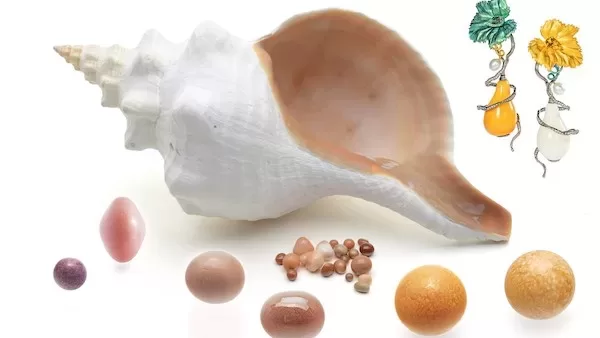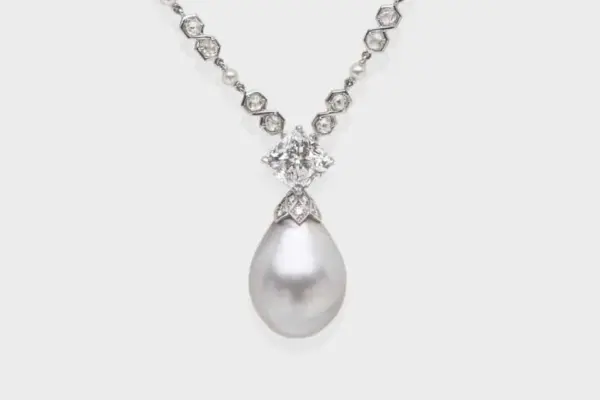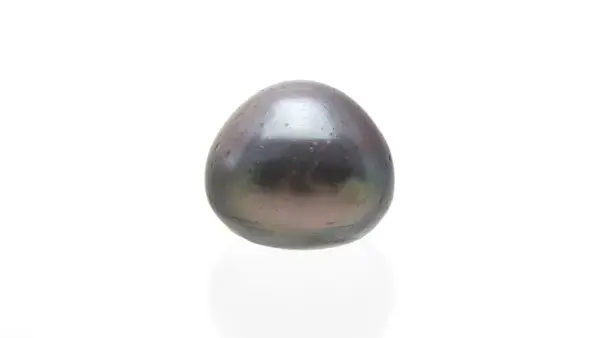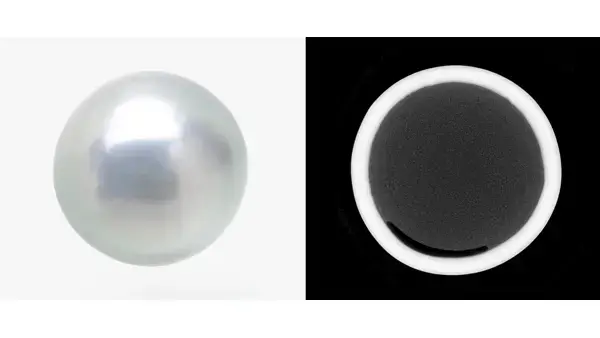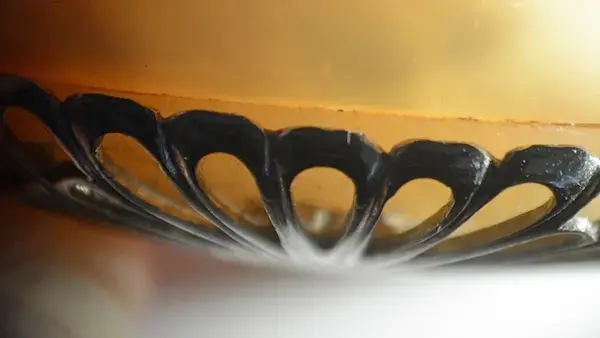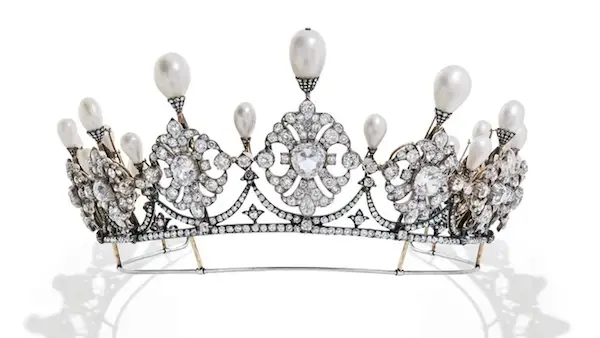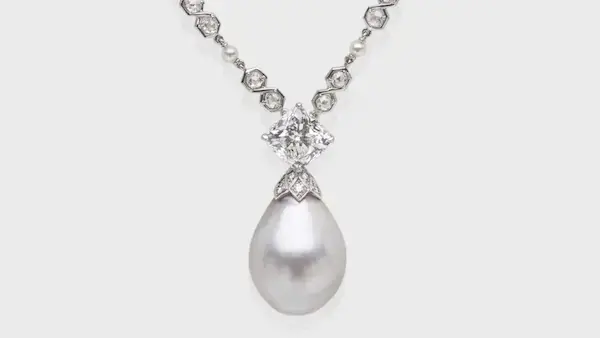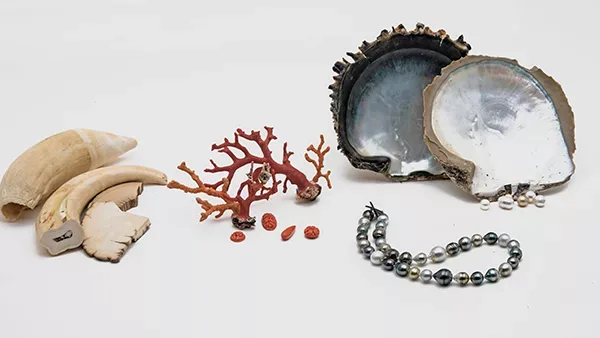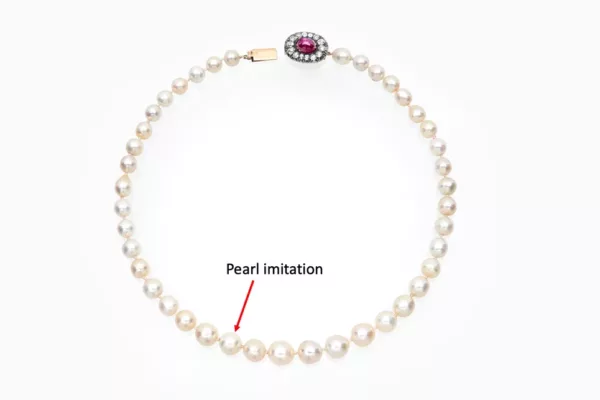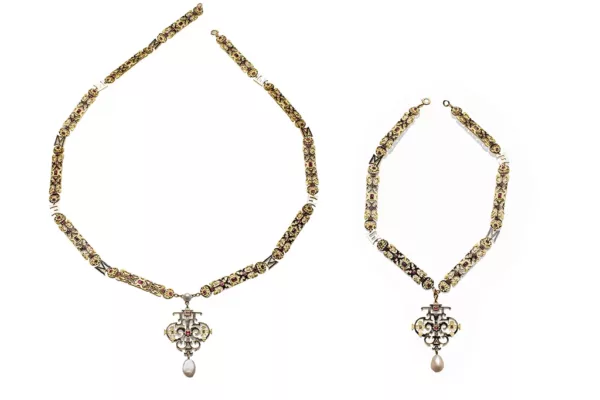Pearls
Natural pearls are some of the oldest gems collected by mankind. Natural pearls continue today to be desired objects at auction. SSEF has tested many of the world’s most iconic natural pearls in recent years. Our expertise in pearl testing rests on continuous research and expeditions to natural pearl sources and cultured pearl farms worldwide.
We test different types of pearls objects
- Single or multiple loose pearls
- Pearls mounted in jewellery
- Pearl necklaces
We distinguish between natural and cultured pearls, freshwater or saltwater pearls, possible treatments on a pearl and whether a pearl has been worked or not. SSEF does not comment on the species from which a pearl may have come from. Since 2017, we offer radiocarbon age dating of pearls as a service to clients (click here for more information).
Explore our research library
Visit to Japan’s pearl farms
Having attended the IGC conference in Tokyo in October 2023, Dr. Michael S. Krzemnicki and Dr. Laurent E. Cartier took some time to travel south to visit the cultured pearl trading hub of Kobe and pearl farmers in Mie prefecture.
Exceptional non-nacreous pearls and pearl jewellery
Over the past few months, we have again analysed a number of outstanding, historic, or gemmologically interesting pearls. These include natural pearls from gastropods and non-nacreous shells.
DNA Fingerprinting and age dating of historic natural pearls: a combined approach
DNA Fingerprinting and age dating of historic natural pearls: a combined approach. IGC 2023 Proceedings, 157-158.
Saltwater pearl with barium
Recently, the SSEF received a button-shaped pearl of 7.5 ct for testing. Based on X-ray radiography and a UV-Vis-NIR reflectance spectrum, the pearl was easily identified as a saltwater natural pearl from the species Pinctada margaritifera.
Cultured pearl with unconventional bead material
Recently, we received a round pearl for testing which exhibited an excellent surface quality and a remarkable size of 24 mm in diameter. Interestingly, its weight of 60 ct was rather low for such a pearl (resulting in a calculated specific gravity of approx. 1.61 instead of 2.715 considered standard
Assembled blisters and shells used to imitate pearls
Since historic times, natural pearls have been treasured and considered symbols of wealth and beauty. When harvesting (natural) pearls, one may find not only a pearl inside a shell, but also blister pearls and quite often blisters. A pearl has grown completely wrapped in a pearl sac in the mollusc,
Pearls & diamonds: a royal selection
The SSEF is known worldwide as a leading authority in gem testing, and as such we have the great pleasure to scientifically analyse some of the most prestigious and important jewellery before it is offered up for auction or in private sales. Apart from testing the gem materials in such jewellery, we
Queen Mary pearl: age dating & DNA fingerprinting
Similar to gemstones which are re-polished over time and thus need an updated SSEF report, we also occasionally receive pearls a second or third time for a new report, for example when the pearl is set in a new jewellery design. This is specifically the case when a pearl is important and/or of histo
The value of cultured pearls: evolution and current trends
Pearls are often reported as the oldest valuable gem known to humankind, and have been collected for at least 8,500 years (Ainis, et al., 2019). Natural pearls are accidental formations in wild oysters or mussels, and have been considered to be one of the most precious gems in many cultures (Kunz &
DNA Fingerprinting and Age Dating of Historical Natural Pearls
Presentation by Dr. Laurent E. Cartier at the International Gemmological Conference IGC 2023 in Tokyo, Japan.
Natural pearl necklace with one imitation pearl
Our testing not only revealed the presence of 40 natural pearls of a quite remarkable diameter (8-11 mm), but in addition one imitation pearl consisting of a plastic bead covered by a ‘lacquer’ coating that seeks to mimic a pearly lustre.
Pair of sautoirs by René Lalique
René Lalique (1860-1945) was one of the most ingenious and creative designers of jewellery and glass objects at the end of the 19th and beginning of the 20th century. He significantly contributed to the Art Nouveau and Art Déco periods.

